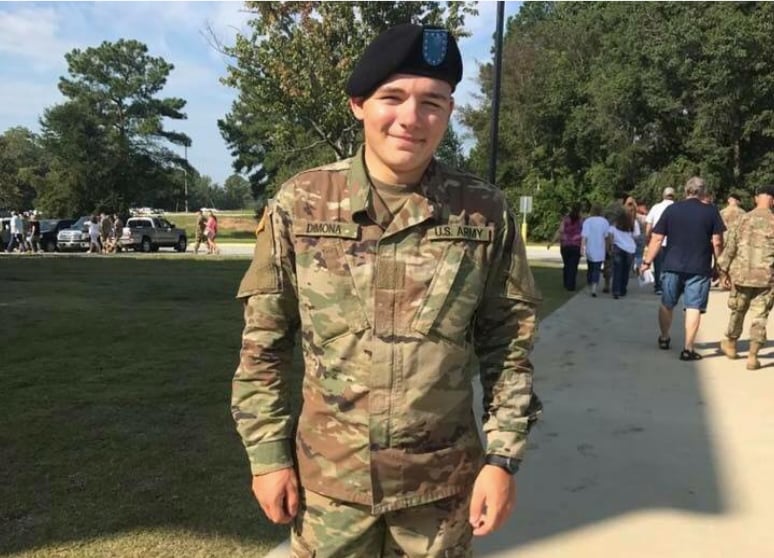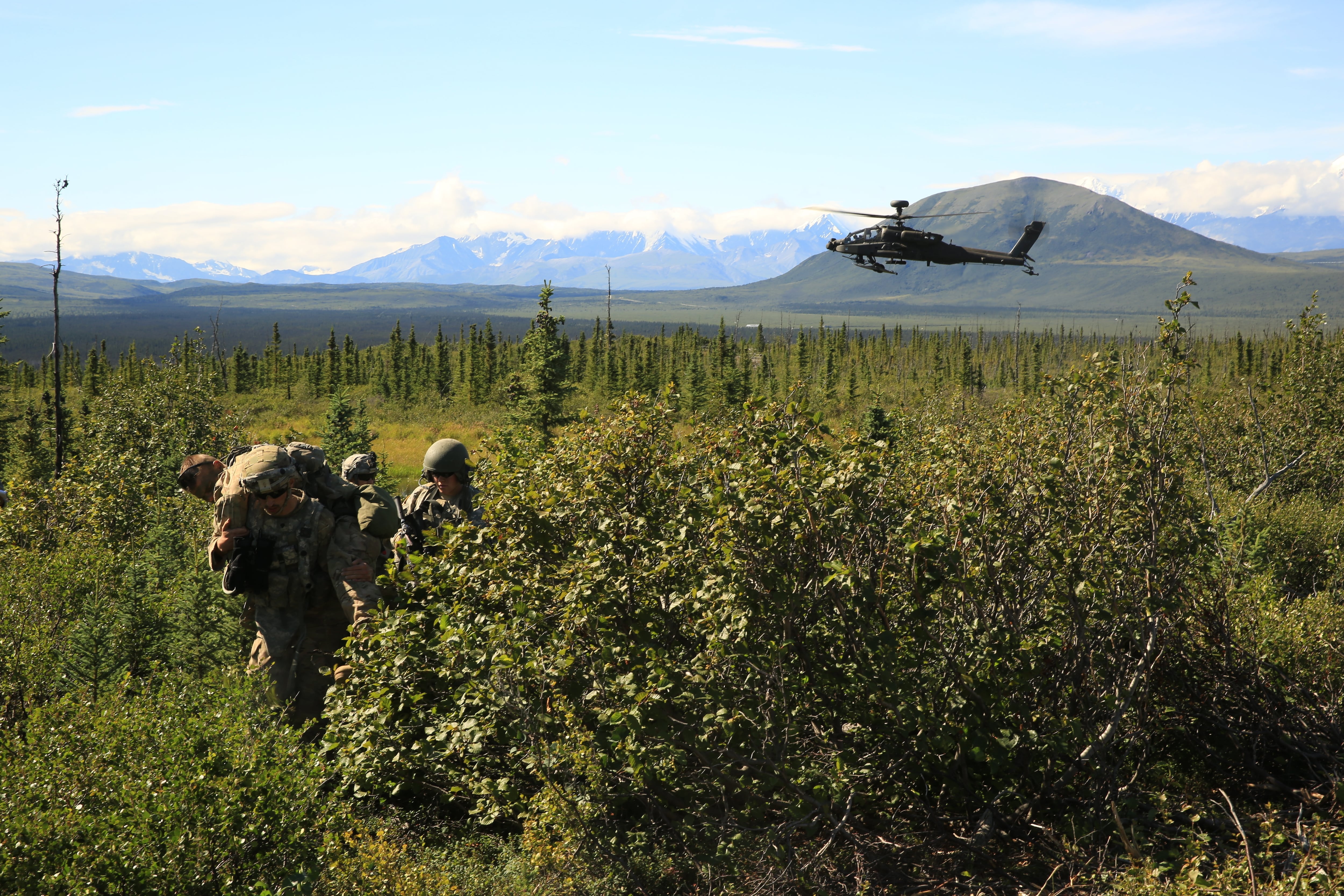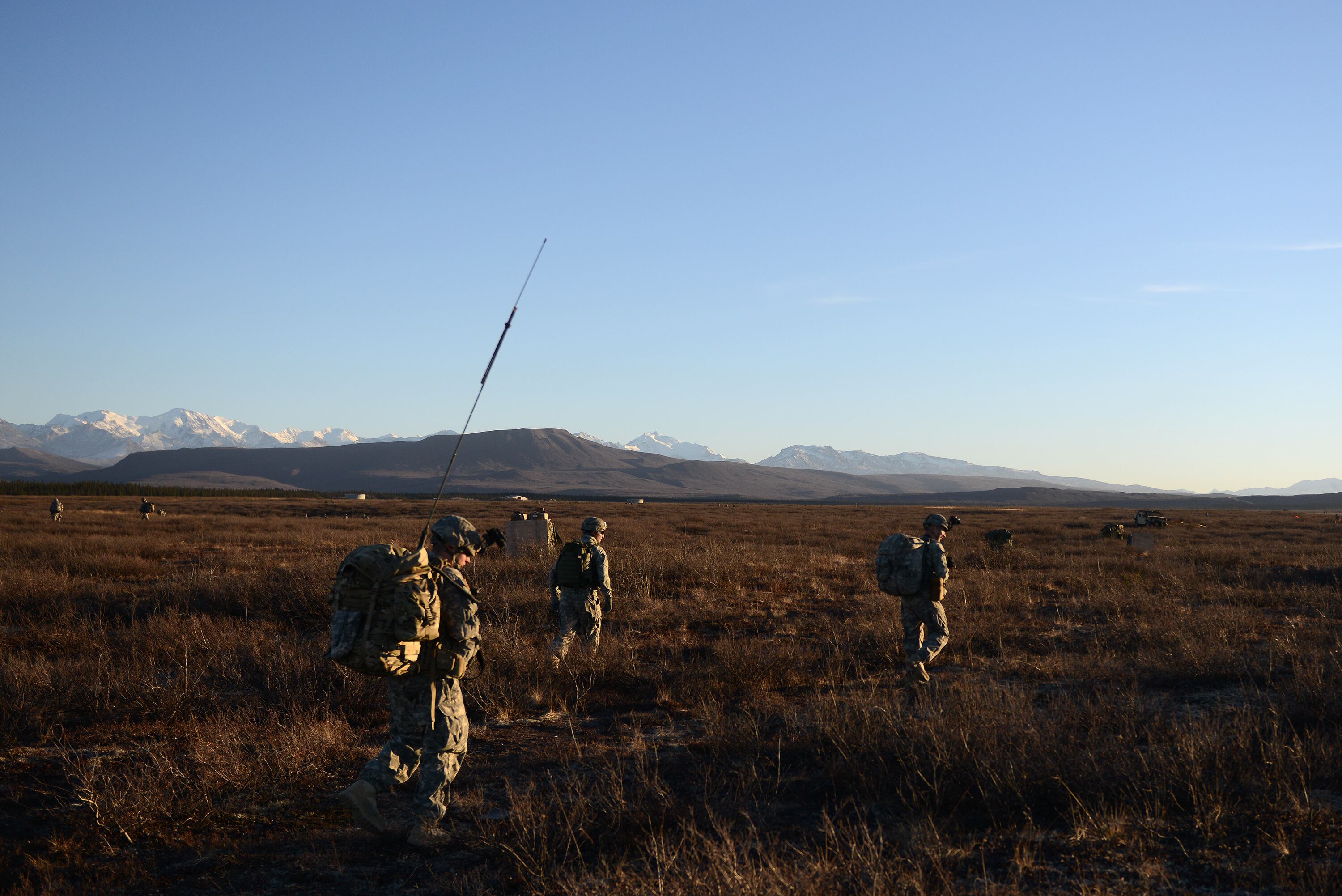On the night Spc. Nicholas DiMona III was accidentally killed by gunfire at Alaska’s Donnelly Training Area, some of his fellow soldiers felt the exercise they were participating in lacked control and was rushed, following a location change late in the planning process.
There were other problems with the combined arms live-fire exercise, or CALFEX, too, according to summaries of witness statements obtained by Army Times.
Radios were inhibited due to the cold weather, targets were not always well-marked, the roles of safety and training personnel were mixed, there was confusion among soldiers regarding the shifting and lifting of gunfire, and danger zones — the area a projectile could land or ricochet — were not sufficiently established.
Combined, the issues proved fatal for DiMona, a 20-year-old infantryman assigned to 3rd Battalion, 509th Parachute Infantry Regiment, who was regarded as a capable and promising soldier with plans to attend the Ranger Assessment and Selection Program.
On the night of March 30, 2019, not long after clearing buildings at the objective area, DiMona was hit by rounds from an M240 machine gun as his fire team moved to a defensive position before a counter-attack. It was toward the end of the CALFEX, an exercise that requires significant coordination to lift and shift suppressive gunfire as soldiers maneuver on a training range.
One soldier said he “felt the entire CALFEX was treated like a situational training exercise [a shorter, scenario-driven training event] due to the amount of casualties and distractions that were being injected,” according to the mishap investigation.
Another soldier said the exercise “was rushed and there was no clear control of the maneuver through the lane at night,” according to their witness statement. That soldier, who was present at a support-by-fire position, said he "could not observe where the rounds were impacting because they did not have tracer rounds.”
Before nightfall, the soldiers had delinked tracer rounds from their 5.56mm and 7.62mm ammunition belts due to a belief that there was a fire hazard on the range. Who gave that order, though, was unclear.
A range worker had placed tracer restrictions on the unit in the days since they arrived at Donnelly Training Area, but he “generally attempted to allow the unit tracer rounds at night,” the investigation reads. “On the night of the mishap, he did not place any fire restrictions on the unit."

U.S. Army Alaska modified range regulations and training strategies following DiMona’s death. Command spokesman Maj. Charlie Dietz said units have been directed to verify their visual signals during rehearsals and blank-fire practice runs before heading into a live-fire event.
The command directed units to add notional “casualties” to emulate battlefield realism only after live-firing and maneuvers are completed. And guidance was issued to clarify the distinct roles of observers and safety personnel, which were commingled on the night of the fatal mishap.
During the exercise, observers “moved wherever they wanted and observed whatever they wanted," one soldier said in a witness statement. "He stated they didn’t know his plan or his squads’ plans.”
While DiMona’s unit “complied with the safety procedures," and their tactics “were generally doctrinally sound,” the multiple risk factors "combined to create the opportunity for the accident to occur,” said Dietz.
Planning problems
Originally, the exercise was to take place at the Yukon Training Center near Fairbanks. But after an initial look at that range, it switched to Donnelly Training Area, which required Army Alaska to approve a condensed planning timeline.
A range official who had worked at Fort Greely told investigators there are standard milestones that a unit must accomplish during the process of scheduling.
Planning typically starts eight weeks before the training date, with a site recon conducted at six weeks, followed by the building of planning documents.
“This particular training event met none of those milestones,” the range official told investigators. “He stated the planning process started approximately two weeks out from the execution … [and] said initial contact was made about three weeks out.”

Once the planning was complete and the soldiers were at the range, there appeared to be fewer issues.
The observer controllers “had nothing but good things to say” after the unit completed a daytime live-fire iteration on March 29, 2019, according to a soldier with 18 years of service cited in the investigation.
That soldier did note, however, that during the day iteration he had to tell a weapons squad to shift fire after the shift fire signal had already been given.
“During the day live, he told the weapons squads from his platoon and [redacted] Co to lift fire … but for the night iteration he was not at the [support-by-fire] position … because he was carrying a casualty to the CCP located at building one," the investigation reads.
Breaching the concertina wire
The exercise itself involved five phases, starting with a patrol out of the company’s assembly area. Soldiers would move to local support-by-fire positions, there would be a breaching phase, an element would seize the objective and then the unit would consolidate for a counterattack. DiMona’s squad was tasked to clear the third building before the counterattack.
Engineers breached a strand of concertina wire just past 2 a.m. using a field-expedient Bangalore torpedo, and the troops moved through to clear three buildings.
After another squad cleared the first and second structures, a green star cluster was shot off to signal a shift fire. DiMona’s squad then headed to building three.
During the movement, the squad’s M249 gunner was made a notional “casualty." Soldiers from DiMona’s squad continued, breached the door to building three with a hooligan tool and cleared it.
They signaled completion with a “buzzsaw” — a chemlight tied to a length of 550-cord and swung in a circular motion. After building three was cleared, three soldiers moved the notional casualty back to the first building.
The squad was told by the platoon leader that the support-by-fire position had shifted fire and to move to a middle berm in the area. As they moved toward the berm, soldiers started hearing rounds crack. That is when Dimona was shot. The team got down and started yelling “cease-fire.”

Another group of soldiers proceeding to the berm said they “started receiving fire from their left upon entering the wood line, so they all got down and started to move back,” according to one soldier’s witness statement. “He said the rounds were impacting sporadically.”
The investigation’s documents did not identify the individual soldier who fired the fatal shot. Three different M240L machine gun serial numbers are listed on the ground accident report covering DiMona’s death.
Army leaders issued administrative reprimands to some of the soldiers responsible for risk levels within the exercise design, but their names and ranks were withheld.
A fatal combination of issues
Some of the targets on the various berms were difficult to discern that night, though they were supposed to be marked with infrared chemlights.
One soldier said his gun team “could not see targets on the berm, so he would activate his gunner’s laser on the top of the northern berm and the gunner would shoot bursts on the berm,” the investigation reads. That soldier “stated he did not recall seeing the targets marked with infrared chem lights or any other markings."
A separate soldier at the same support-by-fire position did see targets marked with infrared chemlights, “but he could not recall the targets coming back up after being shot, nor could he see the impact of the rounds, because they were not using tracers.”
Radio calls were used during the exercise to help coordinate the lifting of fires, as well.
On the night live-fire iteration, an individual whose name and position is redacted — but who appears to be a platoon leader on the objective — said that before starting the patrol he had good comms with all of his squad leaders and platoon sergeant. Only two of his squad leaders could transmit back to him, though.
“Before the breach his radio stopped working due to the cold,” the investigation reads. However, “his [radio operator] still had radio communication with the company.”
The radio operator communicated the platoon’s movements, engagements and front line trace throughout the night iteration on the company net.
He would radio all phase lines, buildings cleared and occupation of the berms. He told investigators that he was unsure if he had radioed up that building three was clear, “but felt he would have because he had every other time.”
Several soldiers nearby, including the brigade command sergeant major, responded to DiMona with an aid bag after he had been hit by the gunfire.
Medics moved the wounded soldier to the battalion aid station roughly 5 minutes away, where a surgeon and physician assistant began to treat him.
A medical evacuation helicopter from Allen Army Airfield, which serves Fort Greely, arrived at the aid station at 2:55 a.m., departing eight minutes later with DiMona and the surgeon. DiMona was flown to Fairbanks Memorial Hospital. Medical personnel there declared him deceased at 3:48 a.m.
Kyle Rempfer was an editor and reporter who has covered combat operations, criminal cases, foreign military assistance and training accidents. Before entering journalism, Kyle served in U.S. Air Force Special Tactics and deployed in 2014 to Paktika Province, Afghanistan, and Baghdad, Iraq.





